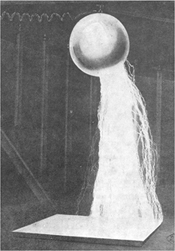
Ghost & Their Machines: Magic, Technology and the Uncanny
John Potts & Edward Scheer
This edition of Scan is concerned with that curious field occupied by both technology and magic. This is an inter-disciplinary field, drawing on recent work in anthropology, sociology, cultural studies and the study of media and technology. Influential texts include Erik Davis’ TechGnosis (1998), David Noble’s The Religion of Technology (1997), Jeffrey Sconce’s Haunted Media (2000), and Michael Taussig’s Mimesis and Alterity (1993). These theorists and many others have explored the “techno-mystical” domain, in which many technologies have been attributed magical properties. Despite the principles of rational enquiry and scientific method promulgated since the Enlightenment, older forms of mystical belief have persisted, even in highly technologised societies. As a result, over the last two centuries many technologies, from photography to computers, have at times been considered “uncanny” – that is, apparently possessing a life of their own. Other technological achievements - such as radio or electric lighting - have been enshrouded in a mystical aura, redolent of the properties previously associated with the spirits or magic.
The articles published in this issue of Scan explore this territory in a number of different ways. Stephen Muecke’s essay, “Contingency on the Island of Ghosts”, proposes an open dialogue with cultural beliefs found in Madagascar, responding to this culture on its own terms which give ghosts and magic a central place. Annette Hamilton’s essay on “Machine Love and the Uncanny Object” is an anthropological study of the way certain objects, in a variety of cultures, become uncanny part objects, organic entities split off from the maternal body. Anne Cranny-Francis probes the limits of scientific discourse in her study of “The Ghost In/On the Machine”, whereby scientific method is haunted by the apparitions it sees but disallows. The articles by Scott McQuire and Patricia Pringle provide a historical dimension, detailing the advent of specific technologies and practices in early Modernity. McQuire describes the mystique surrounding electric light, while Pringle charts the effect on perceptual frameworks of illusionist magic techniques. Steve Collins analyses a contemporary inflection of magic in the practice of “Chaos Magic”, in which the computer is appropriated as an instrument in magic rites. In the Information section of this edition, Nigel Helyer has contributed a photo-essay exploring connections between the archaic and the ultra-modern, culminating in recent research into “virtual audio reality”.
Despite their disparate theoretical orientations, these papers all investigate the co-existence of very old forms of thought – belief in magic, ghosts, spirits – with contemporary practices. They reveal the processes by which objects and technologies become infused with irrational drives and desires. This process has the dual effect of distorting the perception of these objects while conveying a sense of wonder at the world, because they appear as harbingers of the new. This issue considers various technologies from electric lights to robot dogs, miniature theatres, computer programs, 19th century photography and even writing. The focus is on the ways that cultures perform various rituals and practices, resulting in the integration of human astonishment into mainstream consciousness.
References
Davis, Erik (1998) TechGnosis: Myth, Magic + Mysticism In the Age of Information London: Serpent's Tail
Noble, David F. (1997) The Religion of Technology: The Divinity of Man and the Spirit of Invention New York: Penguin
Sconce, Jeffrey (2000) Haunted Media: Electronic Presence from Telegraphy to Television Durham: Duke University Press
Taussig, Michael (1993) Mimesis and Alterity: A Particular History of the Senses New York: Routledge